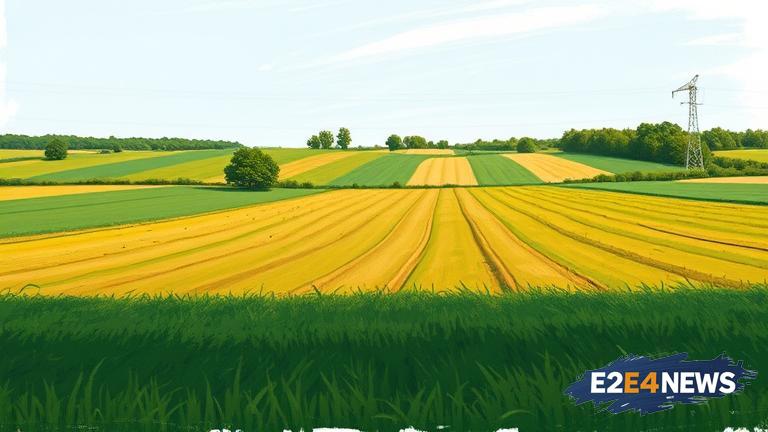Farmland preservation is a vital tool for conservation efforts, allowing for the protection of natural resources, promotion of sustainable agriculture, and preservation of rural landscapes. This approach involves the acquisition of conservation easements or the purchase of development rights to prevent the conversion of farmland into non-agricultural uses. By preserving farmland, conservation efforts can help to maintain biodiversity, reduce soil erosion, and protect water quality. Additionally, farmland preservation can help to support local food systems, promote ecosystem services, and provide economic benefits to farmers and rural communities. The preservation of farmland also helps to maintain the cultural heritage of rural areas, preserving the history and traditions of farming communities. Furthermore, farmland preservation can help to mitigate the effects of climate change by sequestering carbon, reducing greenhouse gas emissions, and promoting sustainable land use practices. In the United States, farmland preservation programs have been established at the federal, state, and local levels, providing funding and technical assistance to farmers and landowners. These programs often involve partnerships between government agencies, non-profit organizations, and private landowners to achieve conservation goals. The use of conservation easements, for example, allows landowners to retain ownership of their land while restricting its use for non-agricultural purposes. This approach can help to reduce the pressure to develop farmland, allowing farmers to continue producing food and maintaining the rural landscape. Moreover, farmland preservation can help to promote sustainable agriculture practices, such as organic farming and regenerative agriculture, which prioritize soil health, biodiversity, and ecosystem services. By supporting sustainable agriculture, farmland preservation can help to reduce the environmental impacts of farming, including water pollution, soil degradation, and loss of biodiversity. The preservation of farmland also provides opportunities for outdoor recreation, such as hiking, birdwatching, and hunting, which can help to support local economies and promote conservation values. In addition, farmland preservation can help to protect wildlife habitats, including those of endangered species, and maintain ecosystem connectivity. The importance of farmland preservation is highlighted by the fact that the United States has lost millions of acres of farmland to development over the past few decades. This trend has significant implications for food security, environmental sustainability, and rural community viability. To address these challenges, farmland preservation programs must be supported and expanded, providing funding and technical assistance to farmers and landowners. Additionally, policies and regulations must be put in place to protect farmland from development and promote sustainable land use practices. By prioritizing farmland preservation, conservation efforts can help to ensure the long-term sustainability of agriculture, protect natural resources, and promote ecosystem services. Overall, farmland preservation is a critical tool for conservation efforts, providing numerous benefits for the environment, rural communities, and society as a whole. The preservation of farmland requires a collaborative approach, involving government agencies, non-profit organizations, private landowners, and farmers, to achieve conservation goals and promote sustainable agriculture practices. By working together, we can help to protect farmland, promote conservation values, and ensure the long-term sustainability of our food systems. In conclusion, farmland preservation is a vital component of conservation efforts, providing numerous benefits for the environment, rural communities, and society. By prioritizing farmland preservation, we can help to protect natural resources, promote sustainable agriculture, and ensure the long-term sustainability of our food systems.
